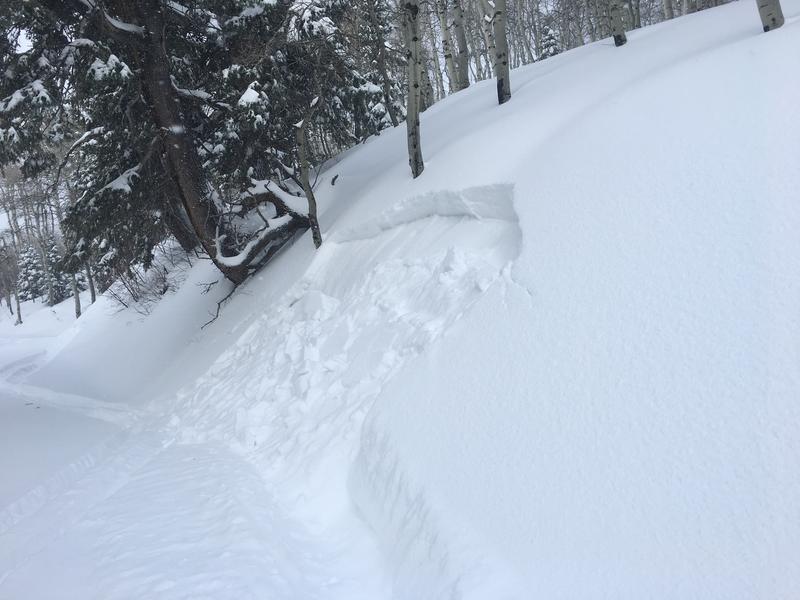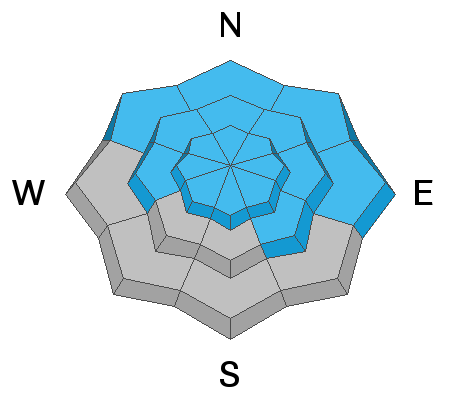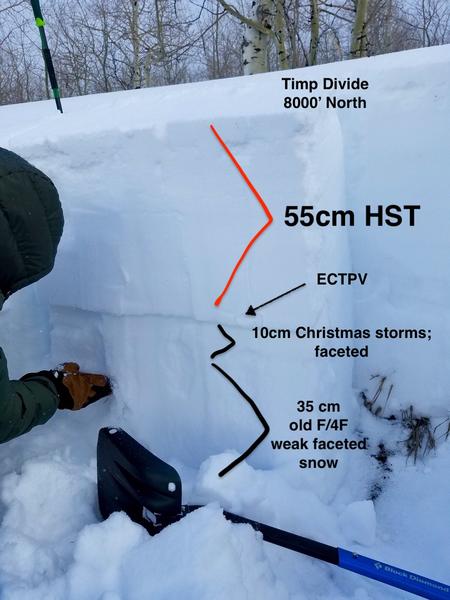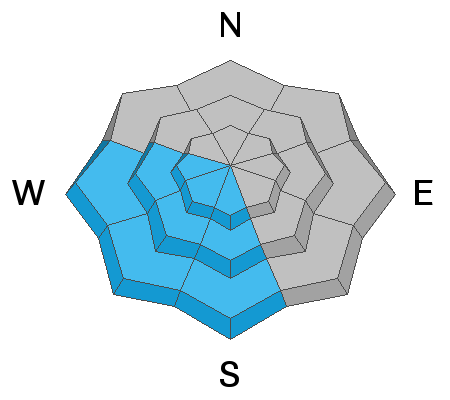Forecast for the Provo Area Mountains

Issued by Evelyn Lees on
Tuesday morning, January 8, 2019
Tuesday morning, January 8, 2019
AVALANCHE WARNING Today the avalanche danger is HIGH on all mid and upper elevation slopes. The avalanche danger is CONDSIDERABLE at low elevations. Avoid all avalanche terrain and avoid being under or near any steep slope. Even very small slopes can bury a person.
Strong south winds combined with over 3 feet of new snow have created very dangerous avalanche conditions.
ANYBODY going into or near the mountains today whether its skiing, snowshoeing, running, sledding, etc. should avoid being near or under any steep slope.

Low
Moderate
Considerable
High
Extreme
Learn how to read the forecast here











